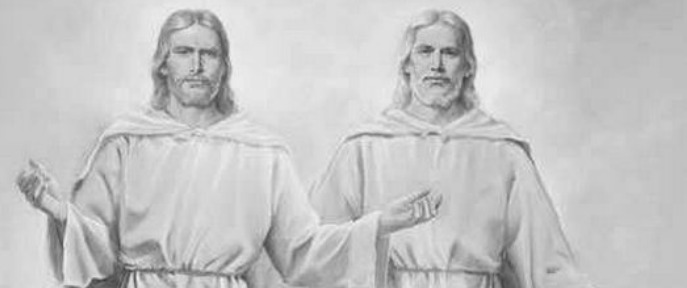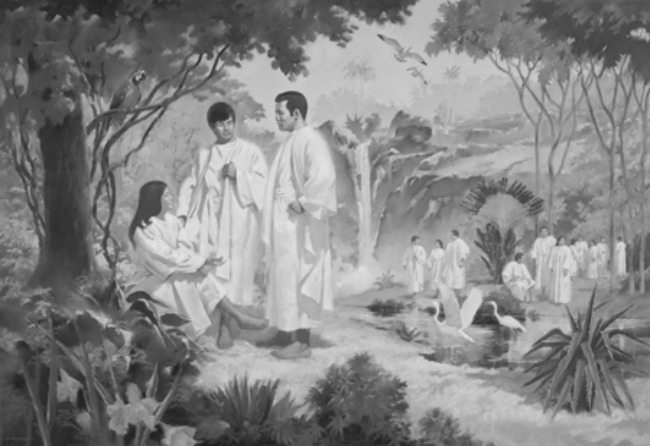Question
Gramps,
If Heavenly Father and I assume Mother, have bodies of flesh and bone, why do their children only have spirits?
Terri
Answer
Terri,
The nature of God and humanity is a profound subject that has intrigued believers for centuries, particularly within the context of Latter-day Saint (LDS) theology. A common question arises: If Heavenly Father and Heavenly Mother are described as having bodies of flesh and bone, why do their children, the spirit beings, only have spirits? Let’s explores this intriguing question, drawing upon sacred teachings and doctrines of The Church of Jesus Christ of Latter-day Saints.
Physical Forms of Deity
Latter-day Saint doctrine teaches that Heavenly Father possesses a glorified body of flesh and bones. This belief is supported by scripture, specifically in Doctrine and Covenants 130:22, which states, “The Father has a body of flesh and bones as tangible as man’s.” This teaching emphasizes the corporeal nature of God, distinguishing the nature of God from the traditional view of an incorporeal deity found in many other Christian denominations.
Similarly, while less frequently discussed, it is believed that Heavenly Mother also has a physical form, sharing in the divine nature that reflects the image of God. This duality of divine parentage is essential to the understanding of human identity and the potential for divinity.
Spiritual Beings and Their Premortal Existence
Before individuals are born into this world, they exist as spirit children of Heavenly Father and Heavenly Mother. This belief is rooted in the doctrine of premortal existence, where every human spirit is created in the image of God, as described in Doctrine and Covenants 77:2. The spiritual essence of humanity is seen as a reflection of their divine parentage, emphasizing that humans are not merely physical beings but possess a divine heritage that shapes their identity.
The scriptures affirm that all human beings are spirit children of God, existing in a premortal state. This doctrine is reinforced in Hebrews 12:9 and Doctrine and Covenants 76:24, which highlight the familial relationship between God and His children.
Gaining Experience Through Mortal Trials
The purpose of mortal life, according to Latter-day Saint beliefs, is for spirits to gain experience and develop through trials. In 2 Nephi 2:25, it is taught that “men are, that they might have joy.” This joy is realized through the experiences gained in mortality, which includes the opportunity to receive a physical body. The physical body is essential for growth, learning, and ultimately, for becoming more like our Heavenly Parents.
The transition from spirit to physical existence allows individuals to experience a fullness of joy, which is a fundamental aspect of the divine plan. The body is not merely a vessel but a critical component of spiritual development. As Joseph Fielding Smith explained in *Doctrines of Salvation*, the purpose of receiving a body is integral to progressing toward becoming more like our Heavenly Parents.
The Plan of Salvation and Mortality
The plan of salvation teaches that spirits must be tested in mortality, where they can prove themselves worthy of exaltation. This doctrine is central to understanding the relationship between the physical and the spiritual. According to Alma 12:24, the plan of salvation involves the necessity of receiving a physical body to fulfill divine purposes.
Latter-day Saints believe that keeping one’s first estate—faithfulness in the premortal life—ensures the promise of being “added upon,” which includes receiving a mortal body (Abraham 3:26). This framework underscores the importance of physical existence in the journey of spiritual progression.
The Nature of Human Spirits
While human spirits do not possess physical bodies during their premortal existence, they are considered organized beings with real existence. As described by Joseph F. Smith in *Teachings of Presidents of the Church*, spirits reflect the character and image of their divine parents. This belief underscores the significance of both physical and spiritual existence, affirming that the spirit is eternal and divine in nature.
Bruce R. McConkie in ‘Mormon Doctrine’ further elaborates that the spirit bodies of humans are similar in form to their physical bodies, signifying a divine design that connects the spiritual and physical realms. This connection emphasizes that the journey of the spirit is intended to culminate in the attainment of a physical body.
In summary, the belief that Heavenly Father and Heavenly Mother have bodies of flesh and bone while their children are spirit beings is deeply rooted in Latter-day Saint theology. It emphasizes the significance of both physical and spiritual existence, highlighting the divine potential of humanity. The purpose of earthly life is to gain experience, develop spiritually, and ultimately return to the presence of our Heavenly Parents.
Understanding this relationship enhances one’s appreciation of the divine plan and the inherent worth of every individual as a child of God. As we navigate our mortal experiences, we can strive to embody the qualities of our divine parents, progressing toward our ultimate destiny of exaltation.
Gramps







